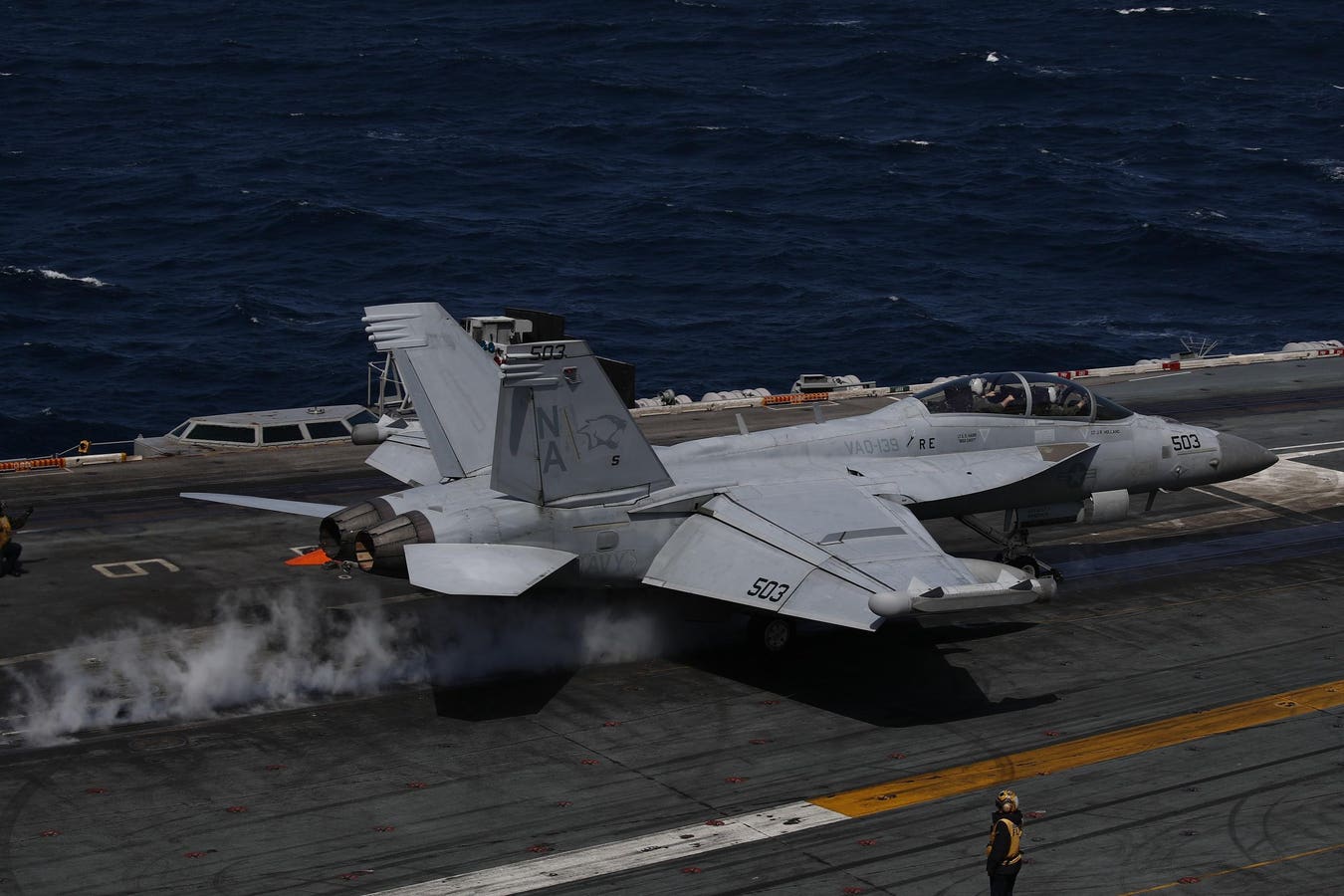Topline
A Navy fighter jet and a helicopter crashed into the South China Sea in two separate incidents on Sunday, the Pacific Fleet said in a statement, a set of accidents that come just months after the Navy lost two carrier-borne fighter jets in separate incidents over the Red Sea.
FILE PHOTO: A U.S. Navy F/A 18 Super Hornet operating from the USS Nimitz aircraft carrier.
Getty ImagesKey Facts
The first incident involved an MH-60R Sea Hawk helicopter assigned to the Helicopter Maritime Strike Squadron 73, which crashed into the South China Sea “while conducting routine operations from the aircraft carrier USS Nimitz,” the Pacific Fleet said.
The statement added that all three crew members on board the helicopter were safely recovered by search-and-rescue teams deployed by the carrier.
In a separate incident that occurred half an hour later, a Navy F/A 18F Super Hornet fighter aircraft, which was also conducting “routine operations” from the deck of the Nimitz.
Both crew members on board managed to eject from the fighter jet and were also “safely recovered” by search and rescue teams.
All five rescued personnel are “in stable condition,” the Pacific Fleet said, adding that the causes of both crashes are “currently under investigation.”
What Do We Know About Recent U.s. Navy Jet Crashes?
The U.S. Navy has lost four F/A-18 Super Hornets to accidents this year, including Sunday’s incident. In August, an F/A-18 jet crashed off the coast of Virginia, but the pilot was rescued after successfully ejecting from the plane. Two other F/A 18s operating from the USS Harry Truman were lost earlier this year while the aircraft carrier was deployed in the Red Sea to carry out strikes on the Iran-backed Houthi militants in Yemen. The first incident occurred in April when a Super Hornet fell off an elevator on board the aircraft carrier after it sharply turned to evade fire from the Houthis. One sailor, who was seated in the cockpit while the jet was being moved, sustained a minor injury. They managed to jump out of the aircraft before it went overboard. Later in May, a Super Hornet fell overboard from the USS Harry Truman after the carrier’s arresting cable—which helps slow down an incoming aircraft—failed during a landing attempt. Both crew members on board the jet successfully ejected and were rescued. In December last year, another F/A-18 operating from the Harry Truman was shot down by a missile fired mistakenly fired from the USS Gettysburg. Both crew members on board the jet were rescued after ejecting from the jet.
Key Background
The South China Sea is a critical sea route which serves as a passage for around $3 trillion worth of annual trade. China claims about 90% of the sea as part of its territorial waters, however, this claim is disputed by several neighboring countries including the Philippines, Brunei, Malaysia, Indonesia, Taiwan and Vietnam. In 2016, an international tribunal in The Hague dismissed China’s claims over the sea, but Beijing has refused to accept the ruling. The U.S. regularly deploys its naval vessels in the sea as part of what it describes as “freedom-of-navigation” operations. China has criticized the U.S. operations, describing them as provocation, while American officials have accused Chinese vessels and aircraft in the region of carrying out dangerous maneuvers.
What To Watch For
President Donald Trump is set to meet his Chinese counterpart Xi Jinping later this week during to iron out a trade deal between the two countries. The meeting comes after months of escalating trade tensions between Washington and Beijing.
Further Reading
US Navy loses $60 million jet at sea after it fell overboard from aircraft carrier (CNN)

